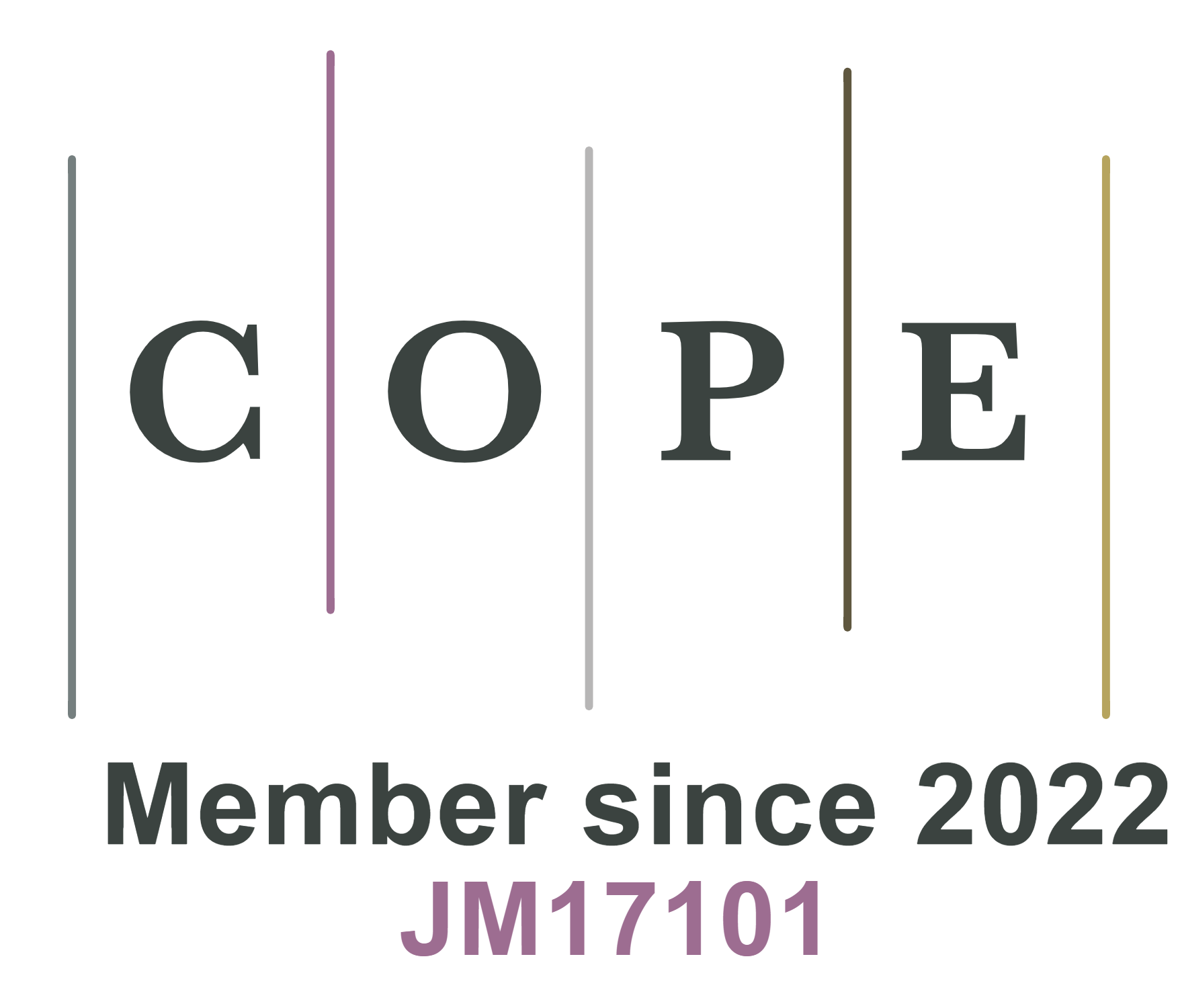REFERENCES
1. Dong, D.; Xiao, Y. Recent progress and challenges in coal-derived porous carbon for supercapacitor applications. Chem. Eng. J. 2023, 470, 144441.
2. Ciszewski, M.; Koszorek, A.; Radko, T.; Szatkowski, P.; Janas, D. Review of the selected carbon-based materials for symmetric supercapacitor application. J. Electron. Mater. 2019, 48, 717-44.
3. Wang, Y.; Zhang, L.; Hou, H.; et al. Recent progress in carbon-based materials for supercapacitor electrodes: a review. J. Mater. Sci. 2021, 56, 173-200.
4. Yan, D.; Liu, L.; Wang, X.; Xu, K.; Zhong, J. Biomass-derived activated carbon nanoarchitectonics with hibiscus flowers for high-performance supercapacitor electrode applications. Chem. Eng. Technol. 2022, 45, 649-57.
5. Chen, H.; Liu, D.; Shen, Z.; Bao, B.; Zhao, S.; Wu, L. Functional biomass carbons with hierarchical porous structure for supercapacitor electrode materials. Electrochim. Acta. 2015, 180, 241-51.
6. Shi, M.; Xin, Y.; Chen, X.; et al. Coal-derived porous activated carbon with ultrahigh specific surface area and excellent electrochemical performance for supercapacitors. J. Alloys. Compd. 2021, 859, 157856.
7. Dong, D.; Zhang, Y.; Xiao, Y.; Wang, T.; Wang, J.; Gao, W. Oxygen-enriched coal-based porous carbon under plasma-assisted MgCO3 activation as supercapacitor electrodes. Fuel 2022, 309, 122168.
8. Yuan, Y.; Yi, R.; Sun, Y.; et al. Porous activated carbons derived from Pleurotus eryngii for supercapacitor applications. J. Nanomater. 2018, 2018, 1-10.
9. Zheng, L.; Chen, M.; Liang, S.; Lü, Q. Oxygen-rich hierarchical porous carbon derived from biomass waste-kapok flower for supercapacitor electrode. Diam. Relat. Mater. 2021, 113, 108267.
10. Qie, L.; Chen, W.; Xu, H.; et al. Synthesis of functionalized 3D hierarchical porous carbon for high-performance supercapacitors. Energy. Environ. Sci. 2013, 6, 2497.
11. Ouyang, J.; Wang, X.; Wang, L.; et al. Construction of a porous carbon skeleton in wood tracheids to enhance charge storage for high-performance supercapacitors. Carbon 2022, 196, 532-9.
12. Tang, D.; Hu, S.; Dai, F.; et al. Self-templated synthesis of mesoporous carbon from carbon tetrachloride precursor for supercapacitor electrodes. ACS. Appl. Mater. Interfaces. 2016, 8, 6779-83.
13. Ren, M.; Zhang, C.; Wang, Y.; Cai, J. Development of N-doped carbons from zeolite-templating route as potential electrode materials for symmetric supercapacitors. Int. J. Miner. Metall. Mater. 2018, 25, 1482-92.
14. Zhao, Y.; Zhang, Z.; Ren, Y.; et al. Vapor deposition polymerization of aniline on 3D hierarchical porous carbon with enhanced cycling stability as supercapacitor electrode. J. Power. Sources. 2015, 286, 1-9.
15. He, S.; Hou, H.; Chen, W. 3D porous and ultralight carbon hybrid nanostructure fabricated from carbon foam covered by monolayer of nitrogen-doped carbon nanotubes for high performance supercapacitors. J. Power. Sources. 2015, 280, 678-86.
16. Zhang, Z.; Mu, S.; Zhang, B.; et al. A novel synthesis of carbon nanotubes directly from an indecomposable solid carbon source for electrochemical applications. J. Mater. Chem. A. 2016, 4, 2137-46.
17. Mhamane, D.; Aravindan, V.; Kim, M.; et al. Silica-assisted bottom-up synthesis of graphene-like high surface area carbon for highly efficient ultracapacitor and Li-ion hybrid capacitor applications. J. Mater. Chem. A. 2016, 4, 5578-91.
18. Xu, Z.; Li, Z.; Holt, C. M.; et al. Electrochemical supercapacitor electrodes from sponge-like graphene nanoarchitectures with ultrahigh power density. J. Phys. Chem. Lett. 2012, 3, 2928-33.
19. Panda, P.; Barman, S. A bottom-up fabrication for sulphur (S), nitrogen (N) co-doped two-dimensional microporous carbon nanosheets for high-performance supercapacitors and H2, CO2 storage. Sustain. Energy. Fuels. 2023, 7, 2441-54.
20. Xia, K.; Gao, Q.; Jiang, J.; Hu, J. Hierarchical porous carbons with controlled micropores and mesopores for supercapacitor electrode materials. Carbon 2008, 46, 1718-26.
21. Jiang, L.; Wang, J.; Li, Y.; et al. Facile synthesis of three-dimensional carbon nanocages with hierarchical porous structures as supercapacitor electrode materials. Int. J. Electrochem. Sci. 2019, 14, 5950-60.
22. Li, Y. H.; Zhang, S. Y.; Yu, Q. M. Hierarchical porous materials for supercapacitors. Adv. Mater. Res. 2013, 750-2, 894-8.
23. Zhou, Y.; Song, Z.; Hu, Q.; et al. Hierarchical nitrogen-doped porous carbon/carbon nanotube composites for high-performance supercapacitor. Superlattices. Microstruct. 2019, 130, 50-60.
24. Wang, L.; Jia, M.; Lu, W.; et al. A facile route for preparation of high-performance hierarchical porous carbons for supercapacitor electrodes. Int. J. Electrochem. Sci. 2016, 11, 6052-63.
25. Chmiola, J.; Yushin, G.; Gogotsi, Y.; Portet, C.; Simon, P.; Taberna, P. L. Anomalous increase in carbon capacitance at pore sizes less than 1 nanometer. Science 2006, 313, 1760-3.
26. Zhang, S.; Zhu, J.; Qing, Y.; et al. Ultramicroporous carbons puzzled by graphene quantum dots: integrated high gravimetric, volumetric, and areal capacitances for supercapacitors. Adv. Funct. Mater. 2018, 28, 1805898.
27. Li, Q.; Jiang, Y.; Jiang, Z.; et al. Ultrafast pore-tailoring of dense microporous carbon for high volumetric performance supercapacitors in organic electrolyte. Carbon 2022, 191, 19-27.
28. Li, Z.; Gadipelli, S.; Li, H.; et al. Tuning the interlayer spacing of graphene laminate films for efficient pore utilization towards compact capacitive energy storage. Nat. Energy. 2020, 5, 160-8.
29. Tao, Y.; Xie, X.; Lv, W.; et al. Towards ultrahigh volumetric capacitance: graphene derived highly dense but porous carbons for supercapacitors. Sci. Rep. 2013, 3, 2975.
30. Yang, T.; Cao, Y.; Yu, Y.; et al. Kinetic enhanced bio-derived porous carbon tile laminate paper for ultrahigh-rate supercapacitors. J. Power. Sources. 2022, 525, 231148.
31. Rani, J. R.; Thangavel, R.; Oh, S. I.; et al. High volumetric energy density hybrid supercapacitors based on reduced graphene oxide scrolls. ACS. Appl. Mater. Interfaces. 2017, 9, 22398-407.
32. Ruike, M.; Kasu, T.; Setoyama, N.; Suzuki, T.; Kaneko, K. Inaccessible pore characterization of less-crystalline microporous solids. J. Phys. Chem. 1994, 98, 9594-600.
33. Kierzek, K.; Gryglewicz, G. Activated carbons and their evaluation in electric double layer capacitors. Molecules 2020, 25, 4255.
34. Zheng, Y.; Wan, Y.; Chen, J.; Chen, H.; Gao, B. MgO modified biochar produced through ball milling: a dual-functional adsorbent for removal of different contaminants. Chemosphere 2020, 243, 125344.
35. Zhao, L. Y.; Dong, X. L.; Chen, J. Y.; Lu, A. H. A mechanochemical-assisted synthesis of boron, nitrogen co-doped porous carbons as metal-free catalysts. Chemistry 2020, 26, 2041-50.
36. Sun, F.; Qu, Z.; Gao, J.; et al. In situ doping boron atoms into porous carbon nanoparticles with increased oxygen graft enhances both affinity and durability toward electrolyte for greatly improved supercapacitive performance. Adv. Funct. Mater. 2018, 28, 1804190.
37. Sun, F.; Wang, H.; Qu, Z.; et al. Carboxyl-dominant oxygen rich carbon for improved sodium ion storage: synergistic enhancement of adsorption and intercalation mechanisms. Adv. Energy. Mater. 2021, 11, 2002981.
38. Zhao, L. Y.; Dong, X. L.; Lu, A. H. Mechanochemical synthesis of porous carbons and their applications in catalysis. Chempluschem 2020, 85, 866-75.
39. Xuan, M.; Schumacher, C.; Bolm, C.; Göstl, R.; Herrmann, A. The mechanochemical synthesis and activation of carbon-rich π-conjugated materials. Adv. Sci. 2022, 9, e2105497.
40. Kumar, M.; Xiong, X.; Wan, Z.; et al. Ball milling as a mechanochemical technology for fabrication of novel biochar nanomaterials. Bioresour. Technol. 2020, 312, 123613.
41. Yao, Y.; Ge, D.; Yu, Y.; et al. Filling macro/mesoporosity of commercial activated carbon enables superior volumetric supercapacitor performances. Microporous. Mesoporous. Mater. 2023, 350, 112446.
42. Zhang, Y.; Fan, S.; Li, S.; Song, Y.; Wen, G. 3D porous oxygen-enriched graphene hydrogels with well-balanced volumetric and gravimetric performance for symmetric supercapacitors. J. Mater. Sci. 2020, 55, 12214-31.
43. Tang, Z.; Zhang, R.; Wang, H.; et al. Revealing the closed pore formation of waste wood-derived hard carbon for advanced sodium-ion battery. Nat. Commun. 2023, 14, 6024.
44. Yuan, R.; Dong, Y.; Hou, R.; et al. Structural transformation of porous and disordered carbon during ball-milling. Chem. Eng. J. 2023, 454, 140418.
45. Wu, D.; Sun, F.; Qu, Z.; et al. Multi-scale structure optimization of boron-doped hard carbon nanospheres boosting the plateau capacity for high performance sodium ion batteries. J. Mater. Chem. A. 2022, 10, 17225-36.
46. Lee, S. H.; Kang, D. S.; Lee, S. M.; et al. X-ray diffraction analysis of the effect of ball milling time on crystallinity of milled polyacrylonitrile-based carbon fiber. Carbon. Lett. 2018, 26, 11-17.
47. Lu, L.; Sahajwalla, V.; Kong, C.; Harris, D. Quantitative X-ray diffraction analysis and its application to various coals. Carbon 2001, 39, 1821-33.
48. Dippel, B.; Jander, H.; Heintzenberg, J. NIR FT Raman spectroscopic study of flame soot. Phys. Chem. Chem. Phys. 1999, 1, 4707-12.
49. Chang, Q.; Gao, R.; Li, H.; Yu, G.; Wang, F. Effect of CO2 on the characteristics of soot derived from coal rapid pyrolysis. Combust. Flame. 2018, 197, 328-39.
50. Le, K. C.; Pino, T.; Pham, V. T.; Henriksson, J.; Tӧrӧk, S.; Bengtsson, P. Raman spectroscopy of mini-CAST soot with various fractions of organic compounds: structural characterization during heating treatment from 25 °C to 1000 °C. Combust. Flame. 2019, 209, 291-302.
51. Chen, C.; Huang, Y.; Zhu, Y.; et al. Nonignorable influence of oxygen in hard carbon for sodium ion storage. ACS. Sustain. Chem. Eng. 2020, 8, 1497-506.
52. Luo, J.; Niu, Q.; Jin, M.; Cao, Y.; Ye, L.; Du, R. Study on the effects of oxygen-containing functional groups on Hg adsorption in simulated flue gas by XAFS and XPS analysis. J. Hazard. Mate. 2019, 376, 21-8.
53. Gao, B.; Yap, P. S.; Lim, T. M.; Lim, T. Adsorption-photocatalytic degradation of acid red 88 by supported TiO2: effect of activated carbon support and aqueous anions. Chem. Eng. J. 2011, 171, 1098-107.
54. Kim, T.; Kim, D.; Ideta, K.; et al. Structural pore elucidation of super-activated carbon based on the micro-domain structure model. J. Ind. Eng. Chem. Chem. 2021, 101, 186-94.
55. Au, H.; Alptekin, H.; Jensen, A. C. S.; et al. A revised mechanistic model for sodium insertion in hard carbons. Energy. Environ. Sci. 2020, 13, 3469-79.
56. Liu, Y.; Paskevicius, M.; Sofianos, M. V.; Parkinson, G.; Li, C. In situ SAXS studies of the pore development in biochar during gasification. Carbon 2021, 172, 454-62.
57. Beaucage, G. Determination of branch fraction and minimum dimension of mass-fractal aggregates. Phys. Rev. E. Stat. Nonlin. Soft. Matter. Phys. 2004, 70, 031401.
58. Beaucage, G. Small-angle scattering from polymeric mass fractals of arbitrary mass-fractal dimension. J. Appl. Crystallogr. 1996, 29, 134-46.
59. Pfeifer, P.; Ehrburger-Dolle, F.; Rieker, T. P.; et al. Nearly space-filling fractal networks of carbon nanopores. Phys. Rev. Lett. 2002, 88, 115502.
60. Rennhofer, H.; Köhnke, J.; Keckes, J.; et al. Pore development during the carbonization process of lignin microparticles investigated by small angle X-ray scattering. Molecules 2021, 26, 2087.
61. Yan, J.; Wang, Q.; Lin, C.; Wei, T.; Fan, Z. Interconnected frameworks with a sandwiched porous carbon layer/graphene hybrids for supercapacitors with high gravimetric and volumetric performances. Adv. Energy. Mater. 2014, 4, 1400500.
62. Long, C.; Jiang, L.; Wu, X.; et al. Facile synthesis of functionalized porous carbon with three-dimensional interconnected pore structure for high volumetric performance supercapacitors. Carbon 2015, 93, 412-20.
63. Xie, Q.; Bao, R.; Zheng, A.; et al. Sustainable low-cost green electrodes with high volumetric capacitance for aqueous symmetric supercapacitors with high energy density. ACS. Sustain. Chem. Eng. 2016, 4, 1422-30.
64. Xie, Q.; Chen, G.; Bao, R.; Zhang, Y.; Wu, S. Polystyrene foam derived nitrogen-enriched porous carbon/graphene composites with high volumetric capacitances for aqueous supercapacitors. Microporous. Mesoporous. Mater. 2017, 239, 130-7.
65. Mo, R.; Zhao, Y.; Zhao, M.; et al. Graphene-like porous carbon from sheet cellulose as electrodes for supercapacitors. Chem. Eng. J. 2018, 346, 104-12.
66. Wang, C.; Zhang, X.; Wang, J.; et al. Boron/nitrogen/oxygen co-doped carbon with high volumetric performance for aqueous symmetric supercapacitors. J. Electrochem. Soc. 2018, 165, A856-66.
67. Ma, Y.; Zhang, X.; Liang, Z.; et al. B/P/N/O co-doped hierarchical porous carbon nanofiber self-standing film with high volumetric and gravimetric capacitance performances for aqueous supercapacitors. Electrochim. Acta. 2020, 337, 135800.
68. Karuppasamy, K.; Vikraman, D.; Hussain, S.; et al. Unveiling the redox electrochemistry of MOF-derived fcc-NiCo@GC polyhedron as an advanced electrode material for boosting specific energy of the supercapattery. Small 2022, 18, e2107284.
69. Zhao, J.; Wang, Y.; Qian, Y.; et al. Hierarchical design of cross-linked NiCo2S4 nanowires bridged NiCo-hydrocarbonate polyhedrons for high-performance asymmetric supercapacitor. Adv. Funct. Mater. 2023, 33, 2210238.
70. Zhou, Y.; Jia, Z.; Zhao, S.; et al. Construction of triple-shelled hollow nanostructure by confining amorphous Ni-Co-S/crystalline MnS on/in hollow carbon nanospheres for all-solid-state hybrid supercapacitors. Chem. Eng. J. 2021, 416, 129500.









